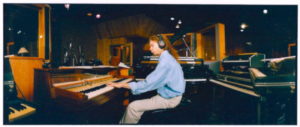In seinen Ausführungen über das Spätwerk bedeutender Musiker „Hinübergehen“ hat Joachim-Ernst Behrendt sich sehr ausführlich mit den finalen Werken vieler Musiker über fünf Jahrhunderte hinweg auseinandergesetzt und versucht die Besonderheit, die ganz eigene Atmosphäre, die diese Werke gemeinsam haben, herauszuarbeiten. Das, was in ihnen in Erscheinung tritt und über die Begrenztheit des Lebens in irgendeiner Weise hinausweist. Er schreibt: „Eine Frucht fällt vom Baum, wenn sie reif ist. Dann ist sie am „Besten“, am süßesten. Aber dann fällt sie auch. Vielleicht gilt das auch für Musiker. Oder für alle Menschen? Es hat mit Reife zu tun. Sie fallen, wenn ihr Werk „am besten“ ist.“ und „Spätwerke sind Kulminationswerke – in einem Maße, das weit über das Zu-Erwartende und das in anderen Künsten, überhaupt in anderen menschlichen Tätigkeiten Erfahrbare hinausgeht.“ So auch bei Lyle Mays als er Mitte 2019 eine infauste gesundheitliche Prognose bekam und entschied ein Werk, das ihm besonders wesentlich erschien noch aufzunehmen: eine Hommage an den Bassisten Eberhard Weber mit dem er gemeinsam gespielt hat und dem er viele musikalische Impulse verdankte. Diese fasste er bereits 2009 in eine Komposition für das Zeltsman Marimba Festival, die er für seine letzte Studioaufnahme, bei der u.a. Bill Friesell, Alex Acuñha, Michael Forman und Steve Rodby dabei waren, noch einmal intensiv überarbeitete und weiterentwickelte. Er steckte seine ganze Energie hinein, um dieses Stück noch bis Januar 2020 fertig aufzunehmen und konnte das Ergebnis schließlich noch in den letzten Tagen vor seinem Tod hören. Zentraler Ausgangspunkt war das Bassspiel und der Kompositionsstil Eberhard Webers zu dem sich viele weitere Elemente, wie minimalistische, ethnische Einflüsse aus Indonesien oder Brasilien, aus dem Jazz und der orchestralen Musik gesellten. Er nahm einfache melodische, harmonische oder rhythmische Ideen und experimentierte mit ihnen bis er die ganze Formenvielfalt entdeckt und feinsten herausgearbeitet hatte. Seine Nichte Aubrey Johnson beschreibt „Some parts of the process occur very quickly and some are painstaking, but together I think the resulting music feels organic and interesting, as well as logical and connected.“
Das 13-minütige Stück beginnt mit einem Marimba-Ostinato, das das ganze Stück hindurchträgt, darauf steigt Mays mit einer leichten Pianomelodie ein, dann folgt der Basseinsatz, der weiter in ein tiefes und komplexes Gewebe hineinführt, das zwar auf einer gewissen Ebene fast zu seicht klingt, was den choralen Einsätzen nicht unwesentlich geschuldet ist, aber niemals darin stecken bleibt und eine große stilistische und kompositorische Vielfalt aus den Grundthemen entwickelt und sich in der Intensität immer weiter steigert. Eberhard kumuliert das musikalische Schaffen Mays auf kleinstem Raum und kulminiert schließlich in einem Tenorsaxophonsolo von Bob Sheppard. Danach öffnet sich ein unglaublich tiefer, leiser Raum, dem ein Subbass unterliegt und entlässt den Hörer … wohin? Das weiß nur Lyle Mays. Now, the music’s over. Was bleibt, ist Stille.

